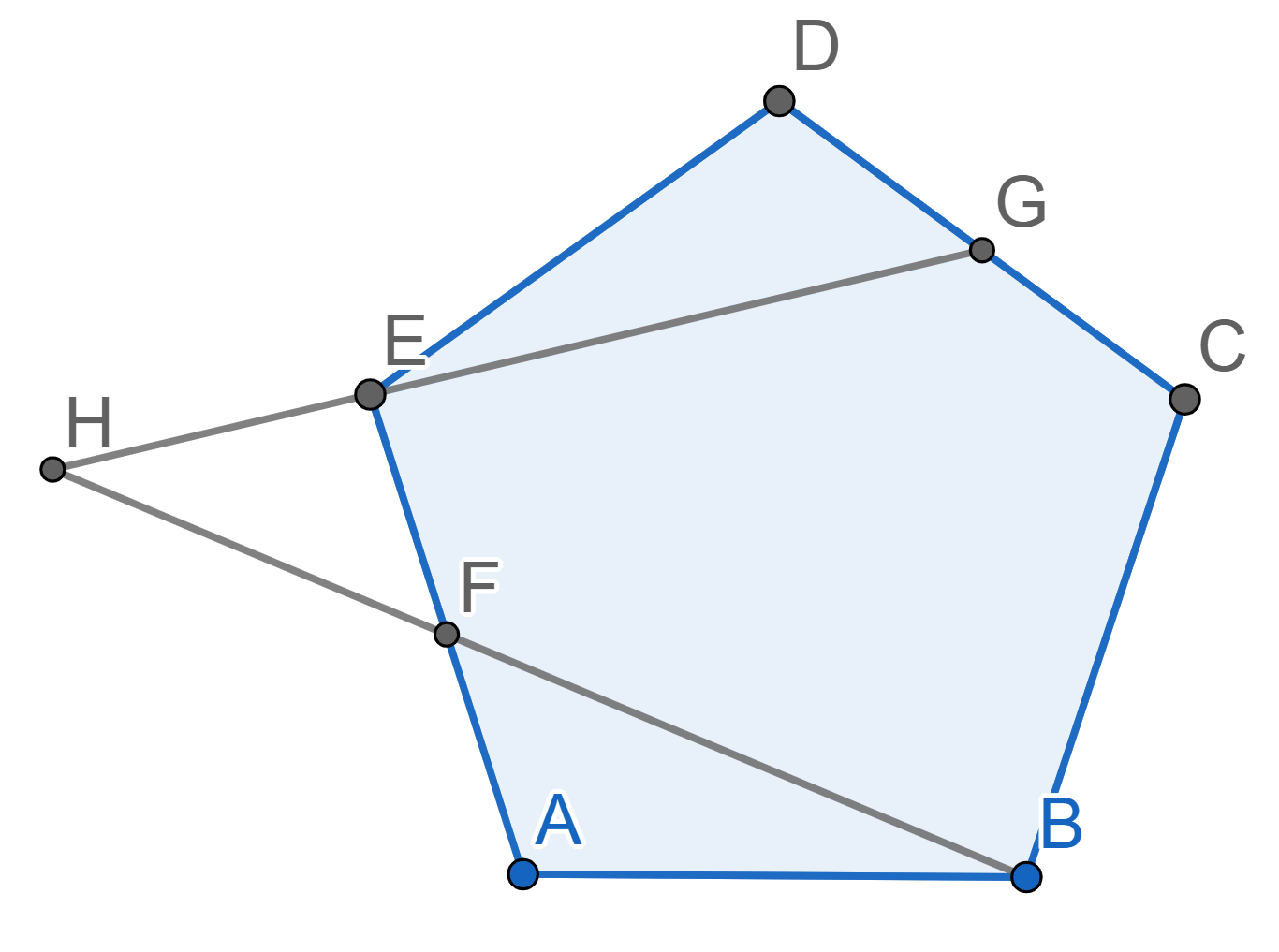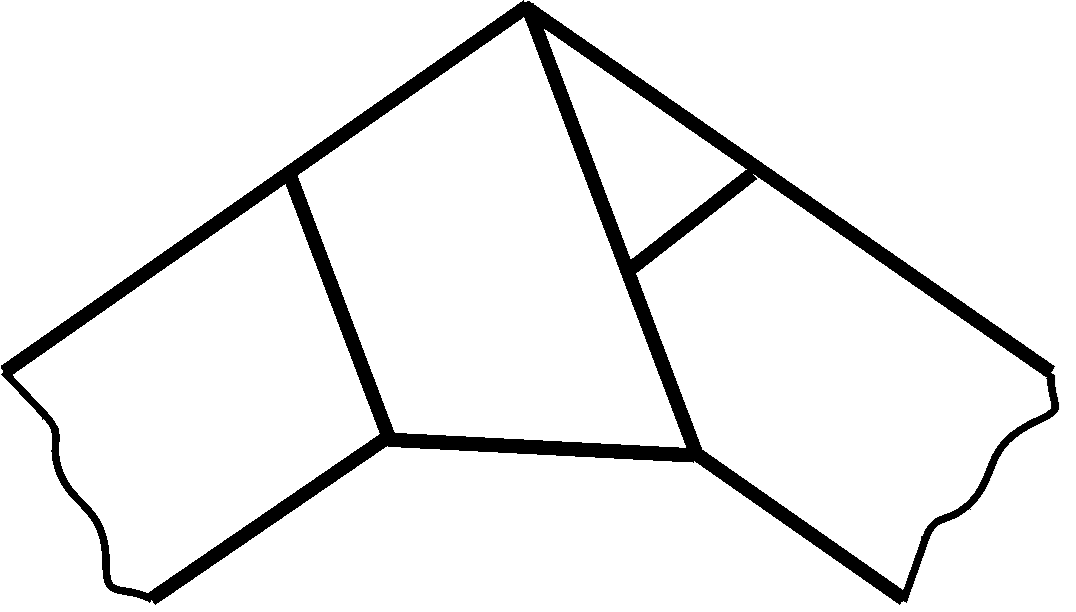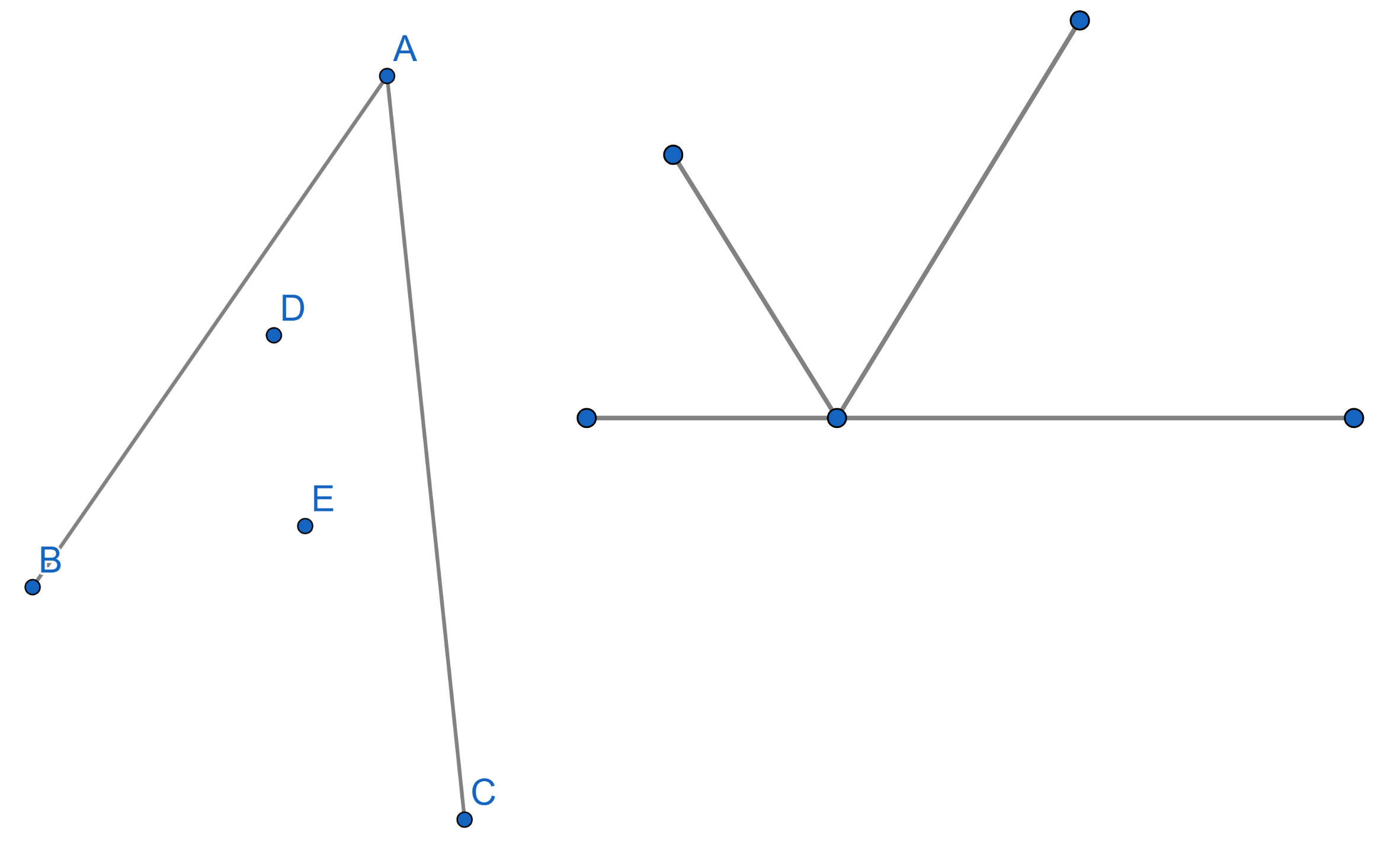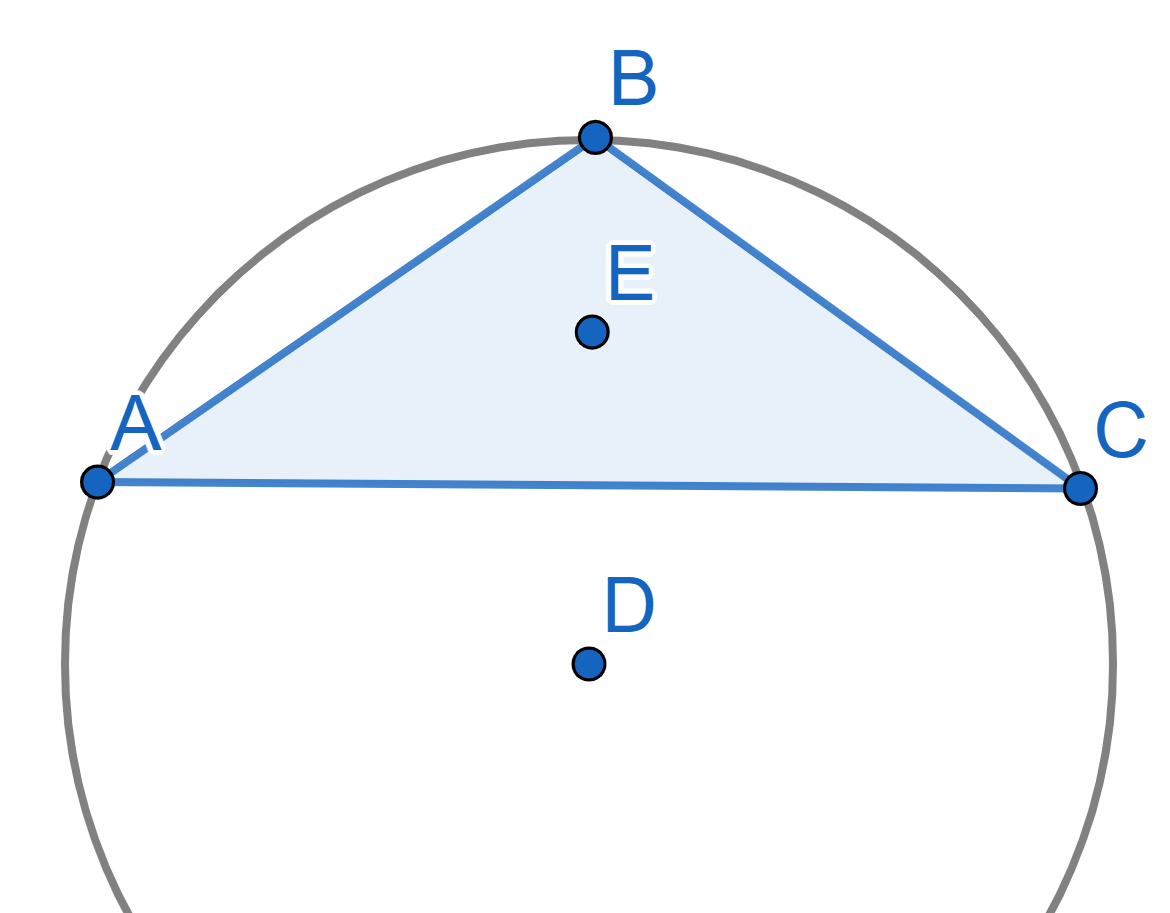Problems
Is it possible to draw \(K_5\) without intersecting edges on a Möbius band? Recall that \(K_5\) is the complete graph on \(5\) vertices. That is, \(5\) points with an edge between every pair of different points.
A circle is inscribed in a triangle (that is, the circle touches the sides of the triangle on the inside). Let the radius of the circle be \(r\) and the perimeter of the triangle be \(p\). Prove that the area of the triangle is \(\frac{pr}{2}\).

Let \(A\), \(B\), \(C\) and \(D\) be four points labelled clockwise on the circumference of a circle. The diagonals \(AC\) and \(BD\) intersect at the centre \(O\) of the circle. What can be deduced about the quadrilateral \(ABCD\)?
Consider the 7 different tetrominoes. Is it possible to cover a \(4\times7\) rectangle with exactly one copy of each of the tetrominoes? If it is possible, then provide an example layout. If it is not possible, then prove that it’s impossible.
We allow rotation of the tetrominoes, but not reflection. This means that we consider \(S\) and \(Z\) as different, as well as \(L\) and \(J\).

Let \(ABCDE\) be a regular pentagon. The point \(G\) is the midpoint of \(CD\), the point \(F\) is the midpoint of \(AE\). The lines \(EG\) and \(BF\) intersect at the point \(H\). Find the angle \(EHF\).

A paper band of constant width is tied into a simple knot and tightened. Prove that the knot has the shape of a regular polygon.

Prove the triangle inequality: in any triangle \(ABC\) the side \(AB < AC+ BC\).
In certain kingdom there are a lot of cities, it is known that all the distances between the cities are distinct. One morning one plane flew out of each city to the nearest city. Could it happen that in one city landed more than \(5\) planes?
Between two mirrors \(AB\) and \(AC\), forming a sharp angle two points
\(D\) and \(E\) are located. In what direction should
one shine a ray of light from the point \(D\) in such a way that it would reflect off
both mirrors and hit the point \(E\)?
If a ray of light comes towards a surface under a certain angle, it is
reflected with the same angle as on the picture.

\(ABC\) is a triangle. The circumscribed circle is the circle that touches all three vertices of the triangle \(ABC\). It is also the smallest circle lying entirely outside the triangle. The center of the circumscribed circle is \(D\).
The inscribed circle is the circle which touches all three sides of the triangle \(ABC\). It is also the largest circle lying entirely inside the triangle. The center of the inscribed circle is \(E\).
The points \(D\) and \(E\) are symmetric with respect to the segment \(AC\). Find the angles of the triangle \(ABC\).
